Discover Arts & Crafts Treasures in the Estes-Winn Antique Car Museum
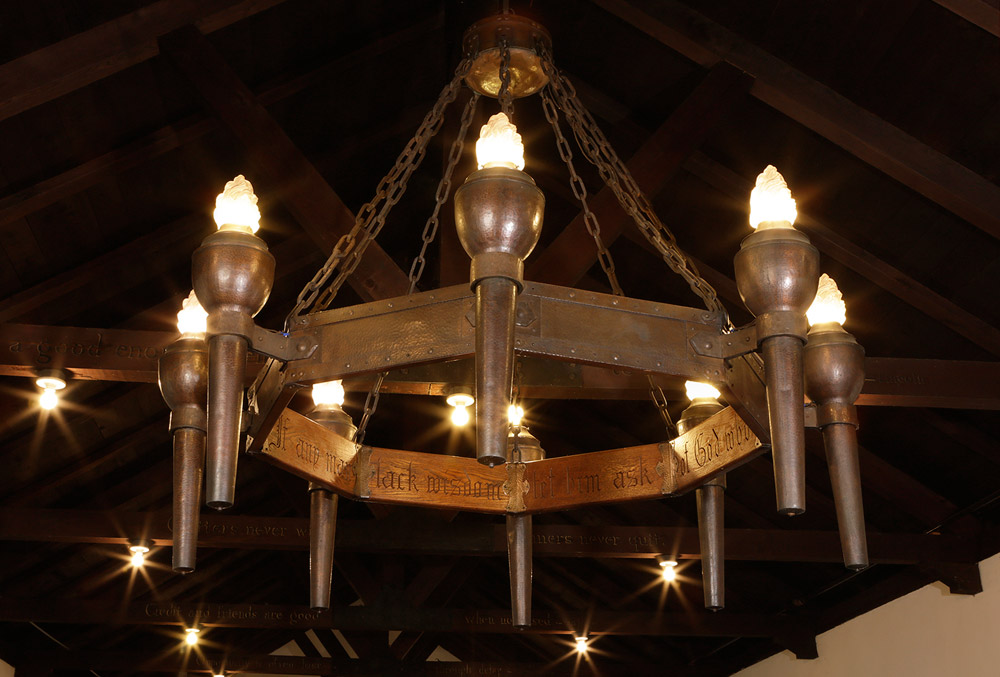
As soon as you step into the Estes-Winn Antique Car Museum at Grovewood Village, one of the first things you’ll notice is an enormous chandelier supported by heavy iron chains. Walk a little farther down the aisle, and you’ll discover another one! These two chandeliers look like they belong in a medieval castle, not a car museum. So what’s the story?
These are Roycroft chandeliers designed by Karl Kipp – creator of some of the most sought-after metalwork of the Arts and Crafts movement. Each chandelier is six feet in diameter and has eight hammered copper torches with flame glass shades. Quotes are hand-carved into the interiors of the oak frames. The chandelier closest to the museum’s entrance reads: “What thou, wilt thou shall rather enforce it with thy smile than hew tot with thy sword.” This is based on the work of William Shakespeare. And the fixture hanging towards the rear of the museum has a quote from the Bible (James 1:5): “If any man lack wisdom, let him ask of God, who giveth to all men liberally, and it shall be given him.”
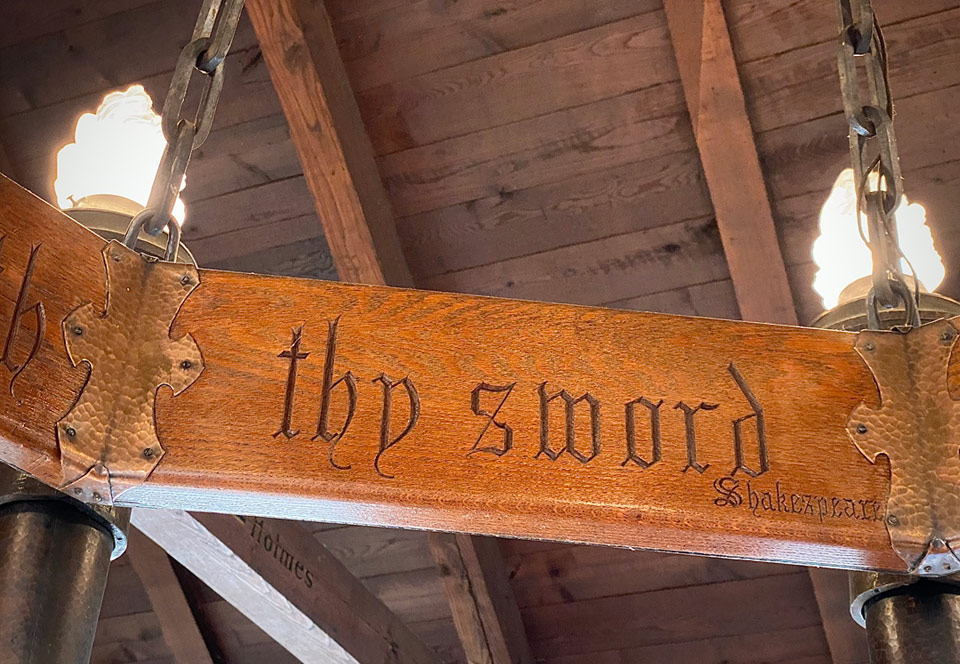
These chandeliers were custom-made around 1918 for a gentleman named Fred Loring Seely. They originally hung in Seely’s 20,000-square-foot castle on top of Sunset Mountain, which he christened Overlook. At the time, Seely managed The Grove Park Inn for his father-in-law, the legendary E. W. Grove. Seely was the one who determined that the Inn should be built and furnished in the Arts and Crafts style, selecting the Roycrofters in East Aurora, NY to provide much of the furniture and lighting fixtures. He also owned and managed Biltmore Industries, adjacent to the Inn, which is now home to Grovewood Village. Seely passed away in 1942, and Overlook was sold in 1949. At some point, we’re not exactly sure when, the chandeliers were stored at Biltmore Industries, which was owned by Seely’s family until 1953.
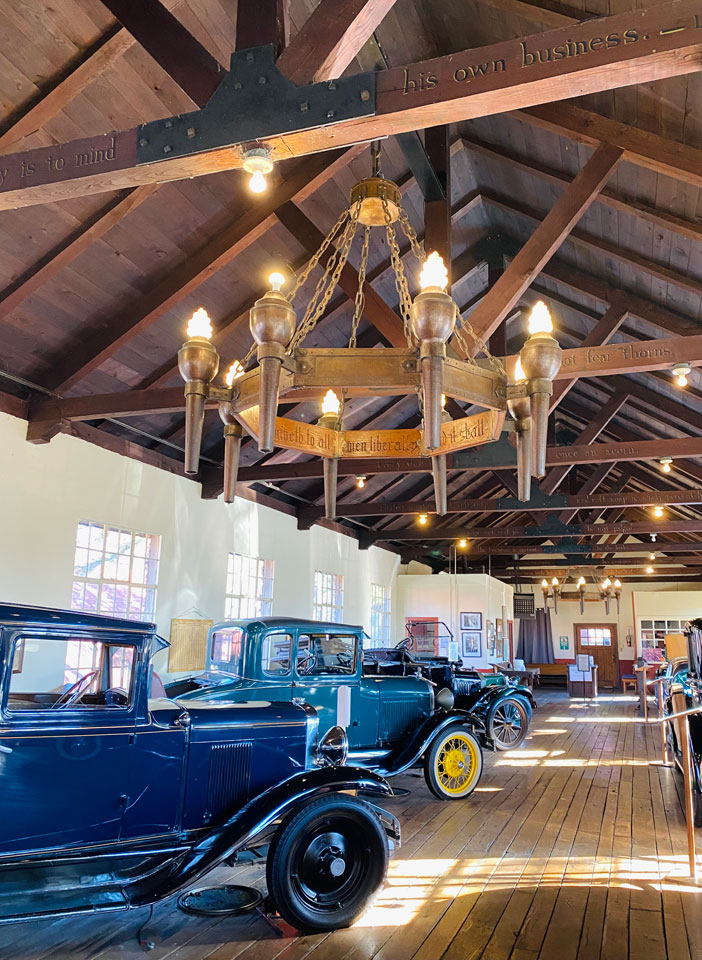
Both chandeliers were appraised back in 2012 by local Arts and Crafts historian Bruce Johnson. At the time, he valued them at $100,000 each.
Our friends at the Roycroft Campus, Amizetta Haj and Alan Nowicki, were able to give us a little more background information on Karl Kipp, the craftsman who designed our cherished chandeliers. And boy, did this guy have an interesting life!
Karl Kipp (1881-1954)
Karl Kipp was one of the most well-known Arts & Crafts metalsmiths of the early part of the 20th century. Originally from Upstate New York, his formative years were spent working at the First National Bank of Saratoga Springs. Unfortunately, being around so much money was too much of a temptation for the young man. In 1904, Kipp was sentenced to five years in prison for falsifying bank records and transferring funds to his personal accounts, of which he would serve just short of 4 years. While incarcerated, he studied architecture and began familiarizing himself with the furniture designs of Gustav Stickley.
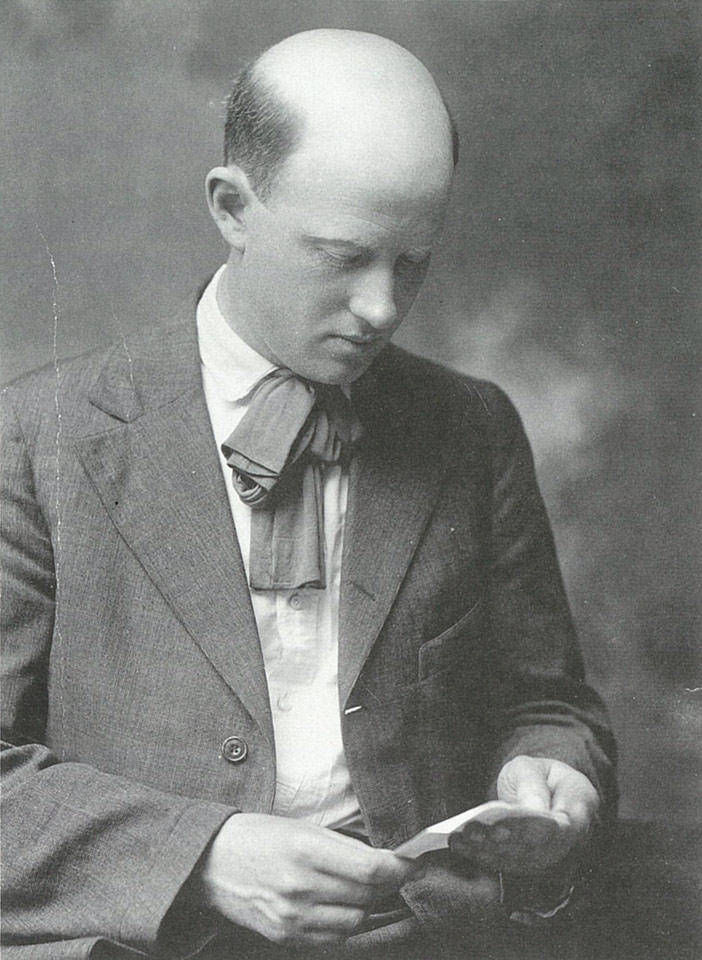
Upon his release in 1908, Kipp found employment in the bookbindery of the Roycroft Campus. Although the exact details of his hiring are unclear, Roycroft founder Elbert Hubbard was known for his non-discriminatory approach to employment, often hiring minorities, single mothers, and ex-cons. Hubbard also believed in finding the proper position for each worker, moving people between departments. Lucky for us, Kipp was moved from the bindery into the Copper Shop and quickly began to thrive. By 1910, Kipp would become the head of the Copper Shop, where he pioneered the design of some of the most notable metalworks, such as the Princess Candlesticks and a German-style Stein. Despite his success, Kipp left Roycroft for a short period of time, from 1911-1915, to open his own firm called the Tookay Shop, a play off his initials and the makers mark he used consisting of two Ks back-to-back.
During Kipp’s absence, the Roycroft would receive their largest commission in 1913, from Fred Seely, manager of the Grove Park Inn: to create 1,200 lighting and furniture pieces for the resort; a task managed by Victor Toothaker. Seely had been a fan of the Roycroft for many years, having purchased pieces for his home and forming a friendship with Elbert Hubbard.
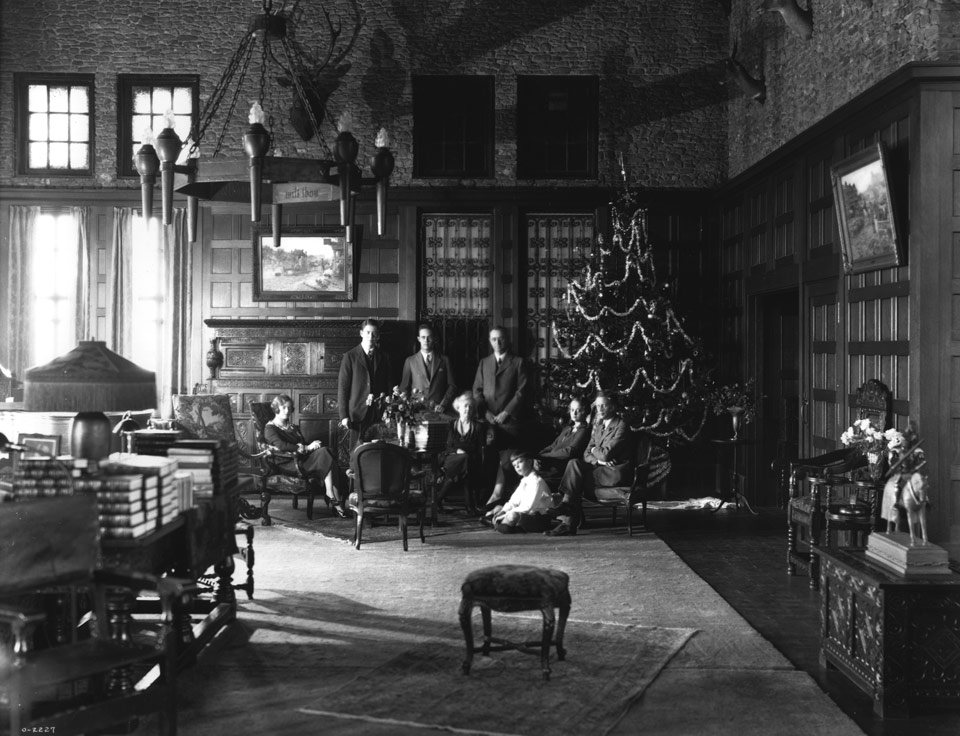
In 1915, after Hubbard’s tragic death on the Lusitania, his eldest son Bert would take over running the Roycroft and convinced Karl Kipp to return. In the coming years, Kipp would work closely with Toothaker, and together they would successfully manage the Roycroft Copper Shop through the 1920s. One of Kipp’s largest projects came in 1918 when Fred Seely requested Kipp to design two custom chandeliers for Seely’s home. These large pieces hang from thick chains down to an octagon made of wood. The wooden interior of the shape is carved with sayings, while the exterior is done in copper. At each exterior point of the octagon, large copper torches, topped with glass bulbs resembling fire complete the chandelier. Overall, it has the appearance of something found in a medieval hall. These chandeliers now hang in the Estes-Winn Antique Car Museum at Grovewood Village.
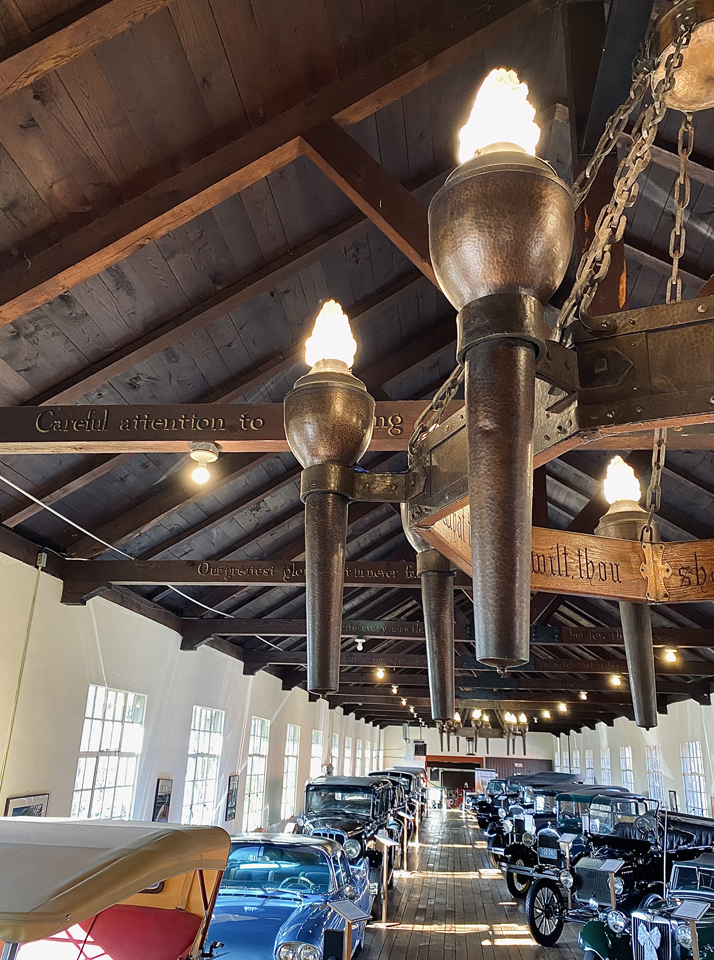
Kipp would once again leave Roycroft in the 1930s to restart his own metalwork shop and would later become a designer of metal furniture for the Daystrom Corporation in Olean, NY. He died in 1954 at the age of 72, leaving behind a legacy of craftsmanship, both as a notable member of the Roycroft community and as an individual artist.
Biographical information was compiled by Amizetta Haj, Director of Visitor Engagement, and Alan Nowicki, Program Director at the Roycroft Campus.
Source Material: The Secret Life of Karl Kipp, published in Style 1900 magazine by David Kornacki.



